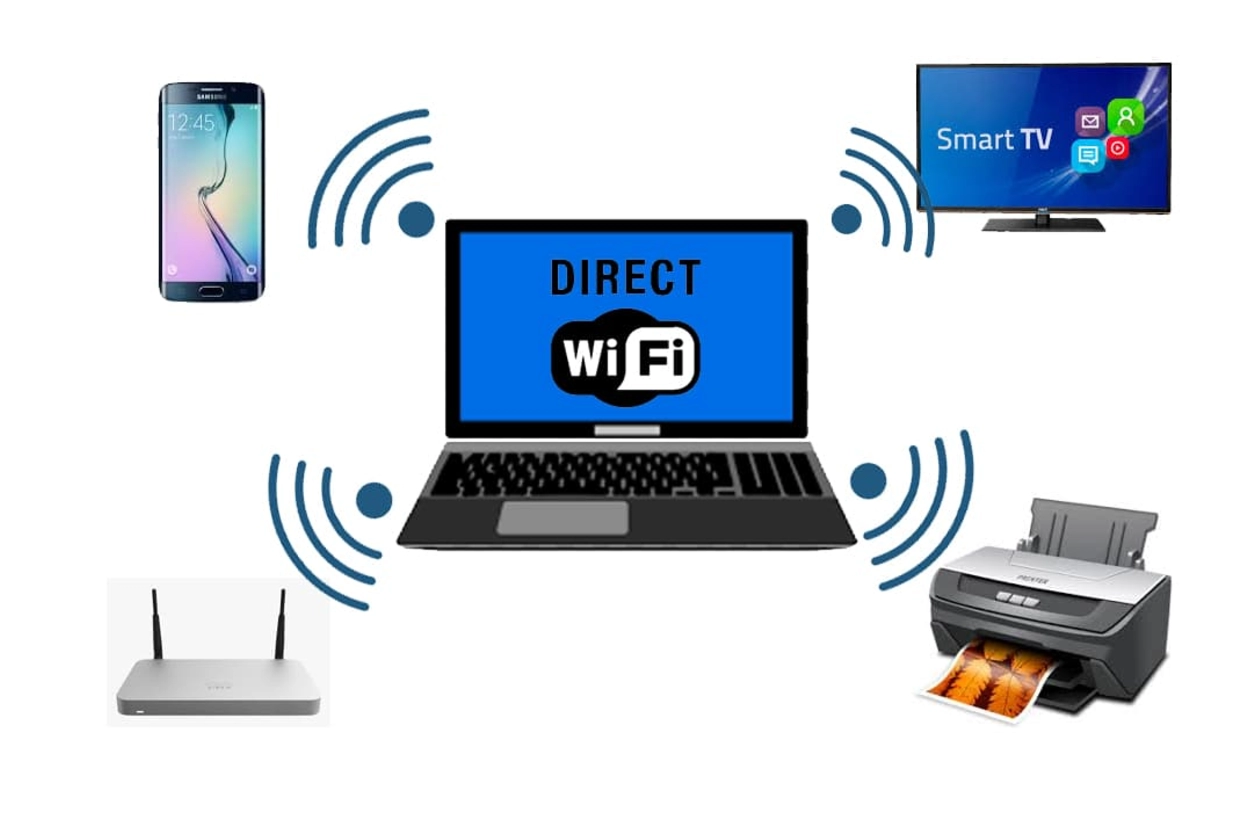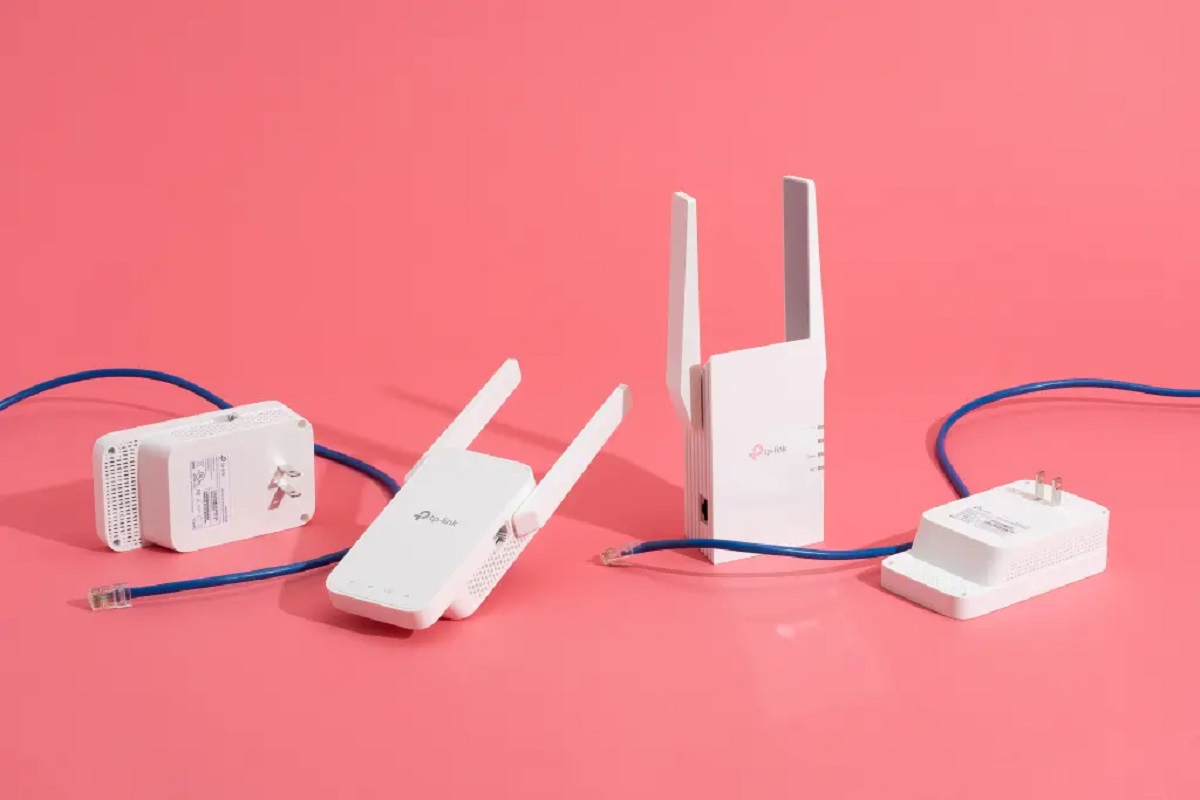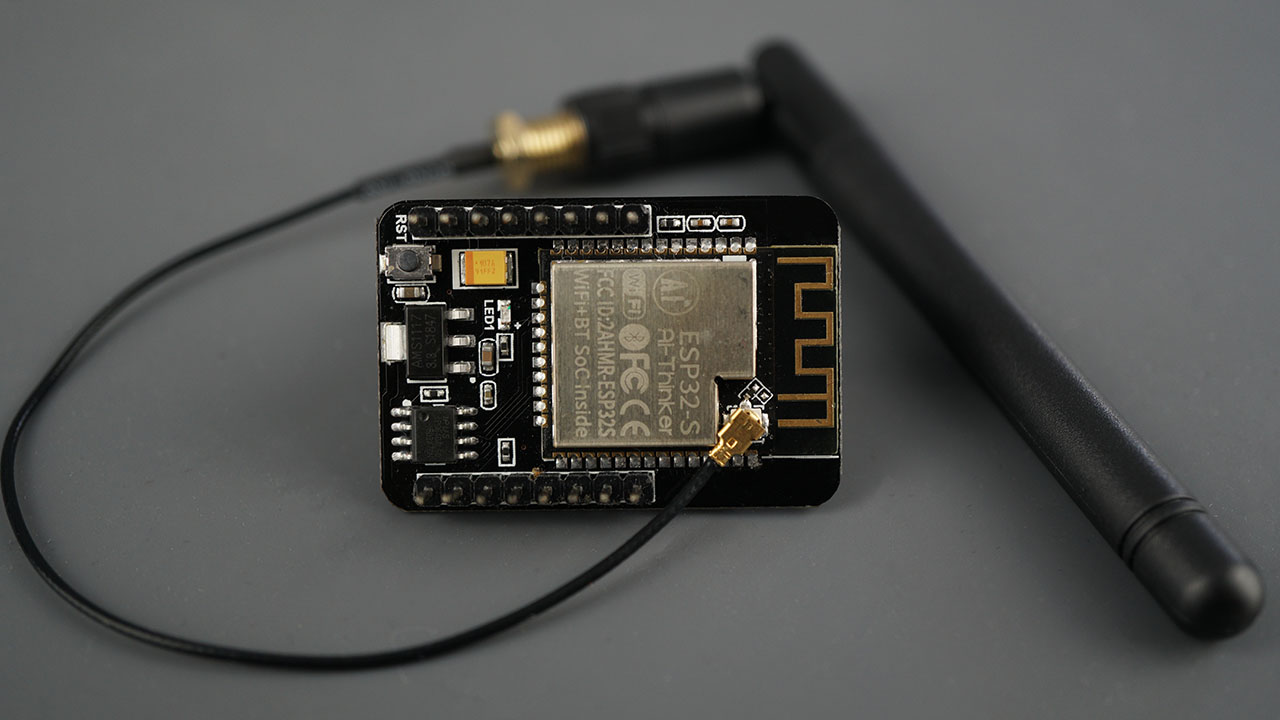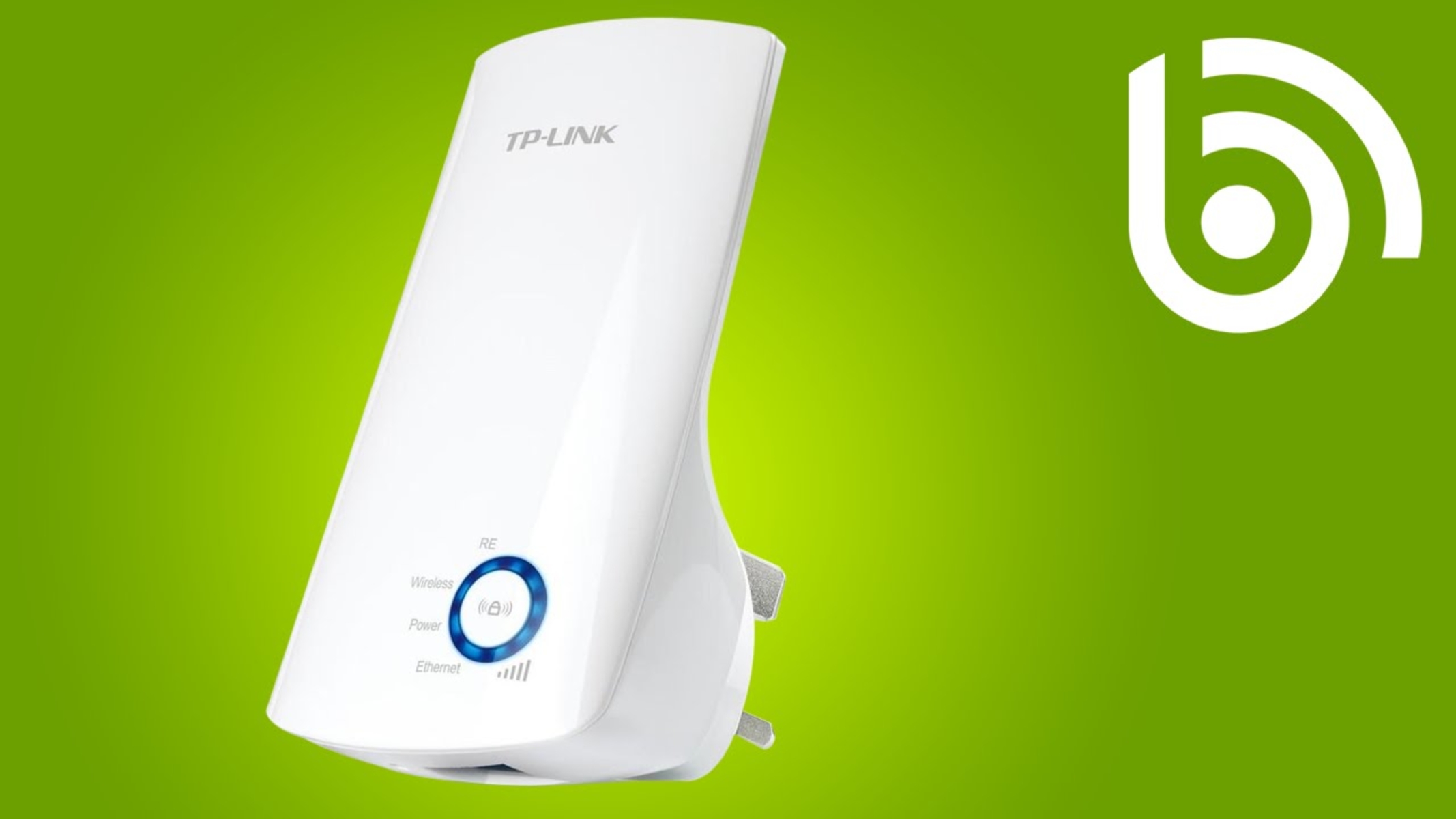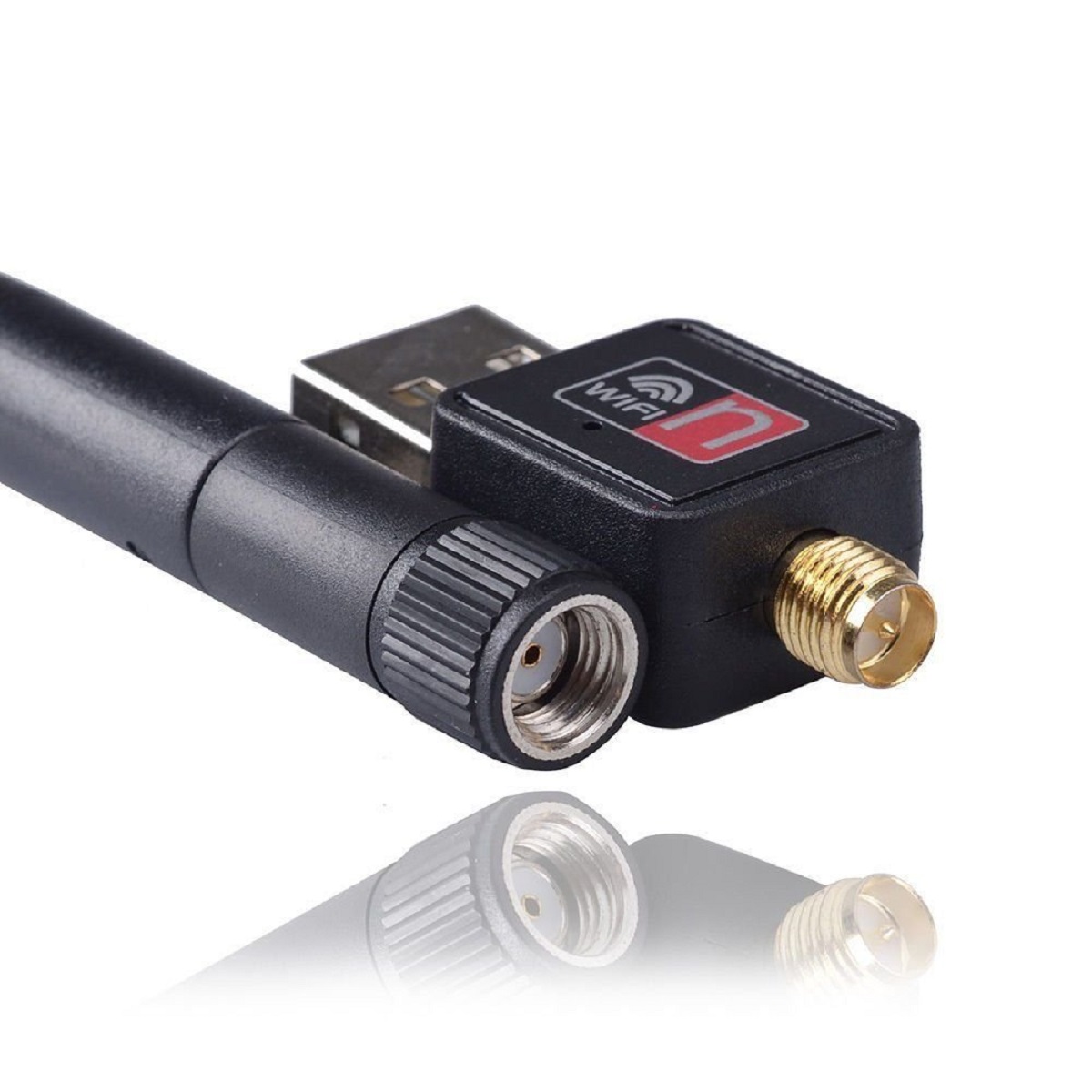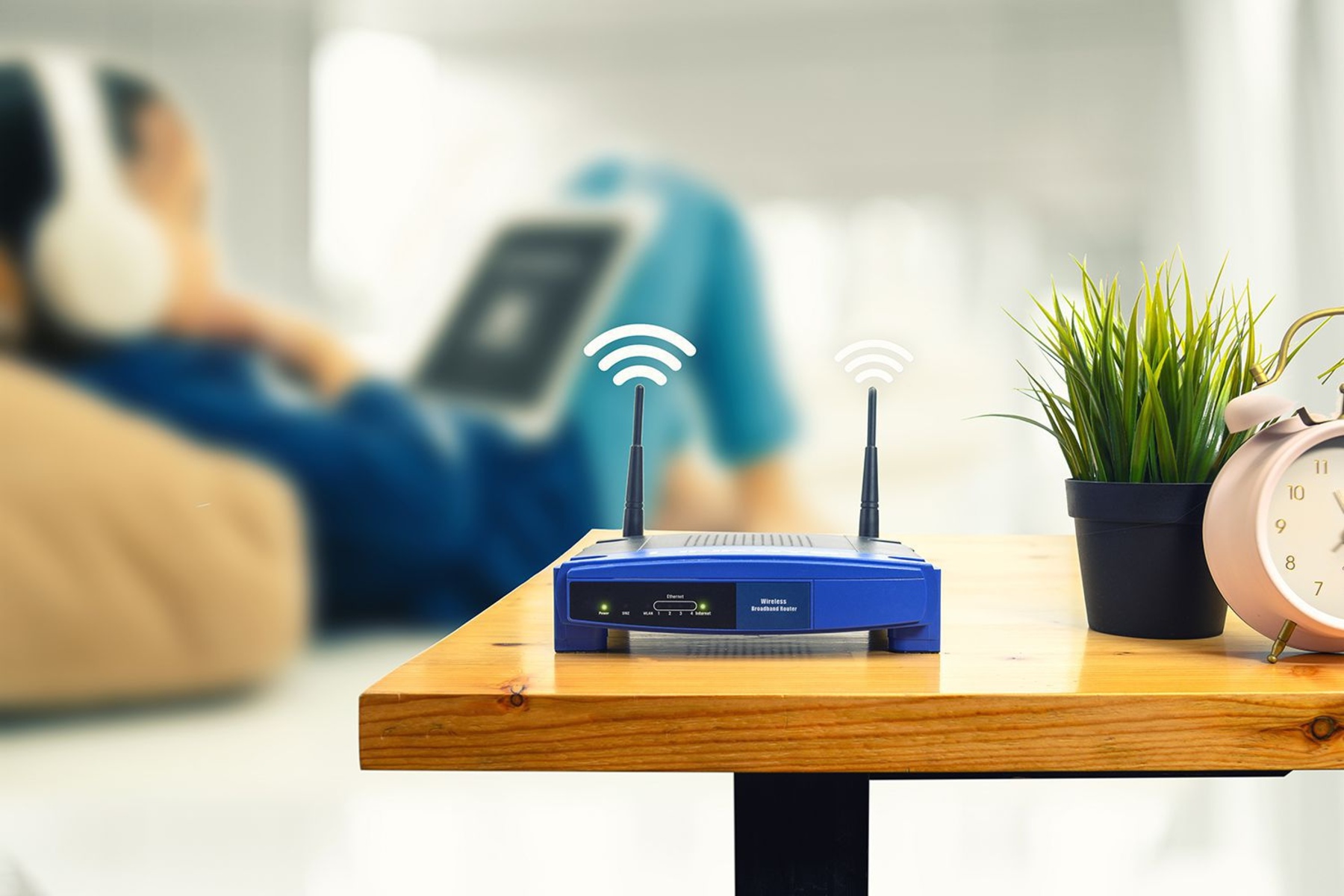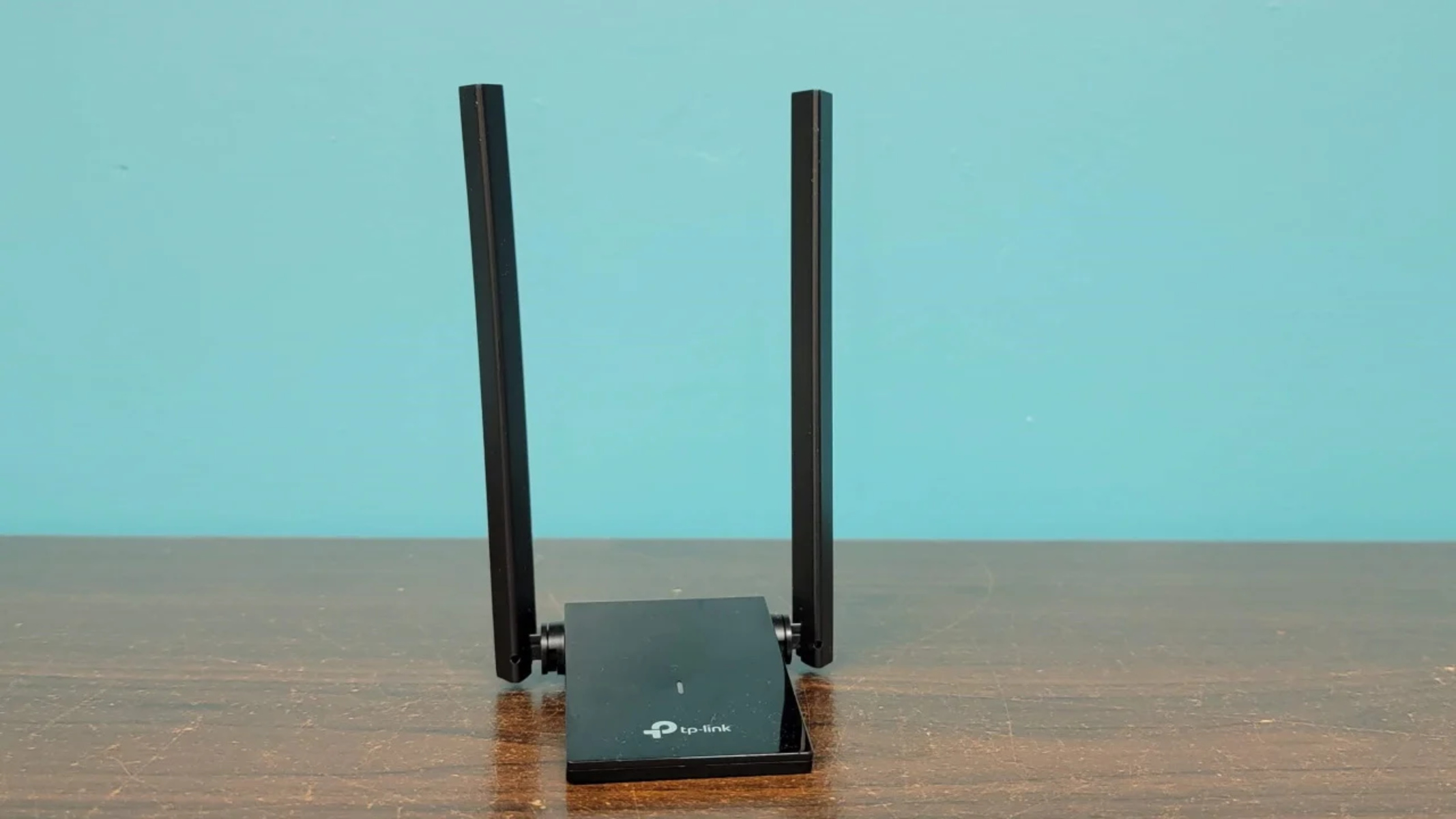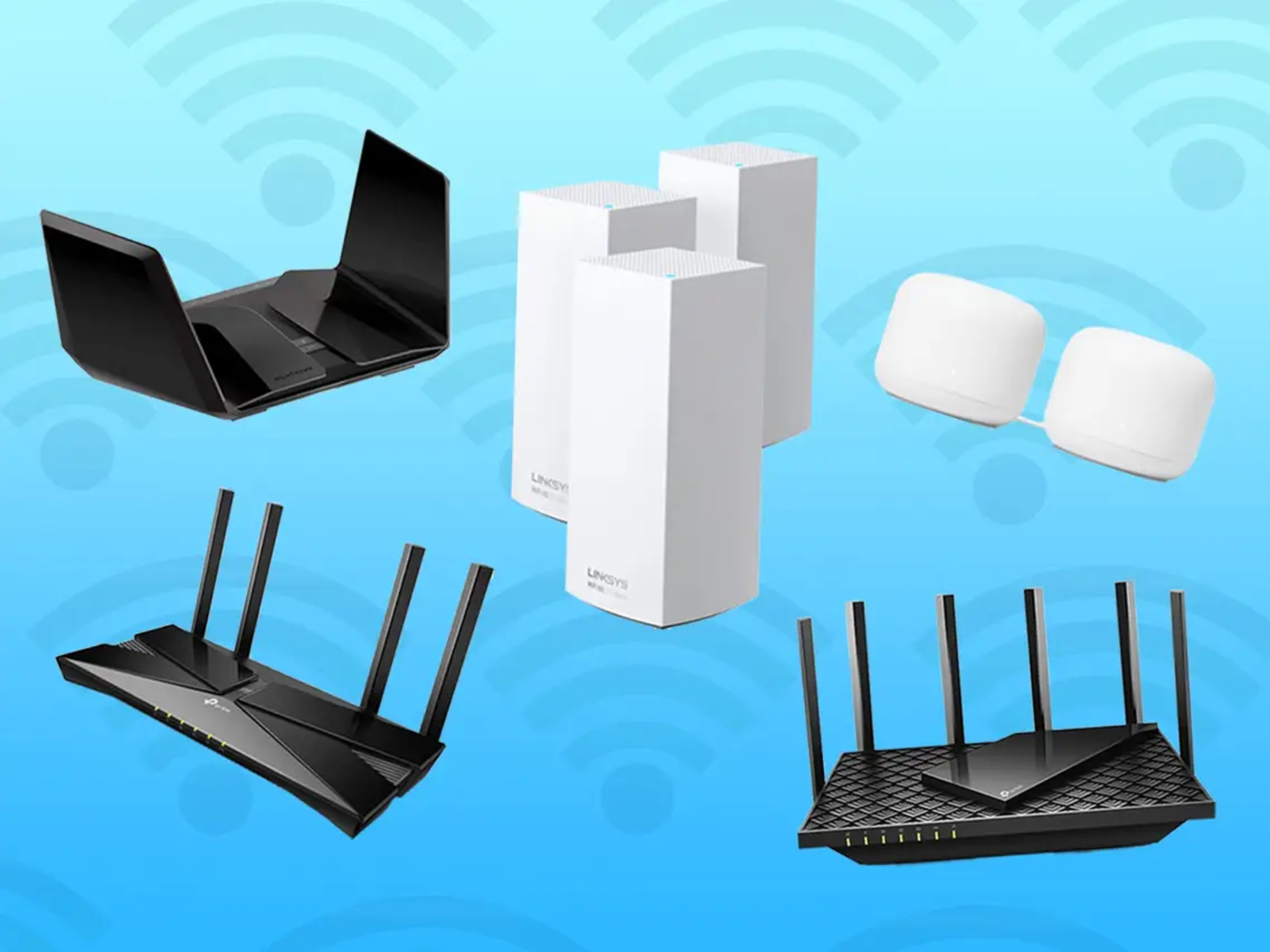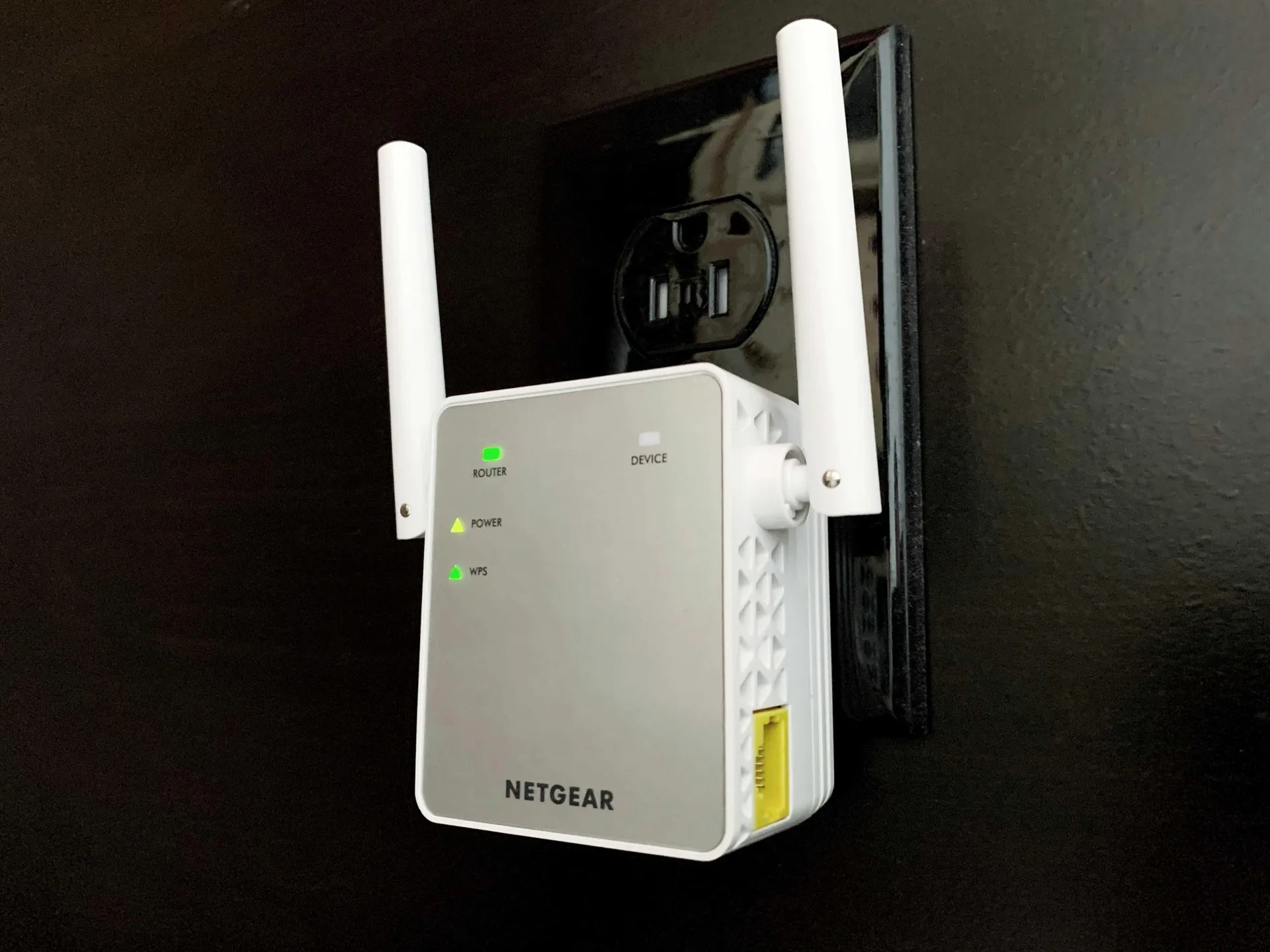Introduction
Welcome to the world of seamless wireless connectivity! In today’s digital age, staying connected is more important than ever. Whether it’s sharing files, printing wirelessly, or streaming media, the ability to connect devices effortlessly is a necessity. That’s where WiFi Direct comes into the picture. WiFi Direct is a technology that allows devices to connect and communicate with each other directly, without the need for a traditional network or internet connection.
WiFi Direct has revolutionized how devices interact with each other, enabling a wide range of applications and making our lives more convenient. In this article, we will explore what WiFi Direct is, how it works, its advantages and limitations, as well as common uses and how to set it up effectively.
The beauty of WiFi Direct lies in its ability to create a wireless connection between devices, completely independent of a traditional network infrastructure. This means that you can establish a direct peer-to-peer connection between devices, allowing them to communicate and share information seamlessly. Whether you want to transfer files between smartphones, print documents without needing a network, or play multiplayer games with friends, WiFi Direct provides a simple and efficient solution.
What sets WiFi Direct apart from other wireless technologies, such as Bluetooth, is its superior range and speed. While Bluetooth is limited to a short range and slower data transfer rates, WiFi Direct can cover larger distances and deliver faster data transfers. This makes WiFi Direct ideal for scenarios that require high-speed and long-range communication, such as streaming media or sharing large files.
Additionally, WiFi Direct offers a secure connection, ensuring that your data remains protected during transmission. By utilizing industry-standard security protocols, WiFi Direct keeps your information safe and prevents unauthorized access. This is essential, especially when sharing sensitive files or connecting to shared resources.
Throughout this article, we will dive deeper into the workings of WiFi Direct, exploring its benefits as well as inherent limitations. We will also discuss common uses for WiFi Direct and provide actionable steps for setting up a WiFi Direct connection. So, let’s get started and discover the incredible possibilities that WiFi Direct brings to the world of wireless connectivity.
What is WiFi Direct?
WiFi Direct is a wireless communication technology that enables devices to connect and communicate with each other directly, without the need for a traditional network or internet connection. It allows devices to establish a peer-to-peer connection, creating a mini-network where they can exchange data and share resources seamlessly.
Unlike traditional WiFi networks that require a central access point or router to facilitate device connections, WiFi Direct allows devices to connect to each other directly. This means that you can establish a direct connection between your smartphone, laptop, tablet, or any other WiFi Direct-enabled device without relying on an intermediary device.
WiFi Direct operates using WiFi technology, which is commonly found in many devices today. However, it is important to note that WiFi Direct is not the same as regular WiFi. While WiFi is typically used to connect devices to a network and access the internet, WiFi Direct is used for device-to-device communication.
To understand WiFi Direct better, imagine a scenario where you want to share a large file between your smartphone and your friend’s tablet. With WiFi Direct, you can simply establish a direct connection between the two devices, allowing for fast and efficient file transfer. There’s no need for an internet connection, a shared network, or any additional cables. It’s as simple as connecting the devices and initiating the transfer.
WiFi Direct has become increasingly popular due to its versatility and ease of use. It is supported by a wide range of devices, including smartphones, tablets, laptops, printers, and even smart TVs. This allows for seamless communication and collaboration between different devices, making tasks such as file sharing, printing, and media streaming effortless.
Furthermore, WiFi Direct is compatible with various operating systems, including Android, iOS, Windows, and macOS. This cross-platform compatibility ensures that you can connect devices regardless of the operating system they are running, adding to the convenience and flexibility of WiFi Direct.
In summary, WiFi Direct is a wireless communication technology that enables devices to connect and communicate directly, without the need for a traditional network or internet connection. It offers a simple, fast, and secure way to exchange data and share resources between devices. Whether you want to share files, print wirelessly, or enjoy multiplayer gaming, WiFi Direct provides a convenient solution for all your device-to-device communication needs.
How does WiFi Direct work?
WiFi Direct operates by establishing a direct wireless connection between devices, allowing them to communicate and share data without the need for a traditional network infrastructure. It utilizes the same underlying technology as regular WiFi networks but with a different approach to device connection and communication.
When two WiFi Direct-enabled devices come within range of each other, they can identify and establish a connection using a process called device discovery. This discovery process involves both devices broadcasting their presence to nearby devices, similar to how a network access point broadcasts its availability. Once the devices discover each other, they can initiate the connection.
To establish a WiFi Direct connection, one device takes on the role of the Group Owner (GO), while the other device becomes the Group Client (GC). The Group Owner acts as a virtual access point and manages the connection between the devices. The Group Client, on the other hand, connects to the Group Owner to access its resources and services.
Once the connection is established, the devices can engage in various forms of communication, such as sending and receiving files, streaming media, or sharing resources like printers or internet connections. A key advantage of WiFi Direct is that it allows for simultaneous communication between multiple devices in a group, enabling tasks such as multiplayer gaming or collaborative work.
Underneath the surface, WiFi Direct uses the same wireless frequency bands and modulation techniques as regular WiFi networks. It typically operates in the 2.4 GHz or 5 GHz frequency bands, providing reliable and high-speed communication. The devices communicate using standard WiFi protocols, allowing for compatibility across different devices and operating systems.
In terms of security, WiFi Direct incorporates industry-standard encryption protocols, such as WPA2-PSK (WiFi Protected Access 2 – Pre-Shared Key), to ensure that the connection and data transmission are secure. These encryption protocols provide a level of protection against unauthorized access and eavesdropping, safeguarding your data and maintaining privacy.
It is important to note that WiFi Direct does not require an internet connection to function. The connection is established solely between the devices, allowing for direct, peer-to-peer communication without relying on a central network or access point. This makes WiFi Direct ideal for scenarios where internet connectivity is unavailable or not required, such as transferring files between devices in a remote area or sharing resources in a temporary setting.
In summary, WiFi Direct works by establishing a direct wireless connection between devices, leveraging the same technology as regular WiFi networks. Through device discovery and the roles of Group Owner and Group Client, devices can connect and communicate with each other seamlessly. The use of standard WiFi protocols and encryption ensures a secure and reliable connection. WiFi Direct provides a versatile solution for device-to-device communication, enabling a wide range of applications and making wireless connectivity effortless.
Advantages of WiFi Direct
WiFi Direct offers several advantages that make it a valuable technology for device-to-device communication. Let’s explore some of the key benefits of WiFi Direct below:
- Easy setup: One of the major advantages of WiFi Direct is its simplicity of setup. Unlike traditional WiFi networks that require configuration and access point setup, WiFi Direct allows devices to connect to each other with minimal effort. Users can easily discover and connect to nearby devices, making it convenient for on-the-go file sharing or collaboration.
- Fast and efficient: WiFi Direct provides high data transfer rates, enabling fast and efficient communication between devices. Whether you’re sharing large files, streaming media, or playing multiplayer games, WiFi Direct ensures a smooth and lag-free experience.
- Versatility: WiFi Direct is compatible with a wide range of devices, including smartphones, tablets, laptops, printers, and smart TVs, among others. It allows for seamless communication and resource sharing between different devices, regardless of their manufacturer or operating system.
- Long-range communication: WiFi Direct offers greater range compared to other wireless technologies like Bluetooth. This allows devices to connect to each other even if they are physically separated by a considerable distance, expanding the possibilities for collaboration and communication.
- Secure connection: WiFi Direct incorporates industry-standard security protocols, ensuring that your data remains protected during transmission. Unauthorized access is minimized, maintaining the privacy and integrity of your information.
- Simultaneous communication: WiFi Direct enables multiple devices to communicate simultaneously within a group. This makes it ideal for collaborative tasks such as multiplayer gaming, group presentations, or sharing resources like printers or internet connections.
- No internet required: WiFi Direct operates independently of an internet connection, meaning you can establish a direct connection between devices even in areas with no available network access. This makes it a convenient solution for sharing files or collaborating in remote locations or temporary settings.
In summary, WiFi Direct offers easy setup, fast and efficient communication, versatility across devices, long-range connectivity, secure transmission, simultaneous communication, and independence from the internet. These advantages make WiFi Direct a valuable technology for seamless device-to-device communication in various scenarios.
Limitations of WiFi Direct
While WiFi Direct offers numerous advantages for device-to-device communication, it is important to be aware of its limitations. Understanding these limitations can help you make informed decisions when using WiFi Direct. Here are some key limitations of WiFi Direct:
- Range: Although WiFi Direct has a longer range compared to technologies like Bluetooth, it is still limited in terms of distance. The range of WiFi Direct can vary depending on the device and environmental factors. If devices are too far apart, the connection quality may degrade or even be lost.
- Power consumption: WiFi Direct can consume significant power, especially when devices are constantly searching for nearby connections. This can drain the battery life of mobile devices more quickly. It is advisable to disable WiFi Direct when not in use to conserve battery power.
- Compatibility: While WiFi Direct is supported by many devices on the market, there may still be compatibility issues between certain devices or operating systems. It is important to ensure that both devices support WiFi Direct and are running compatible software versions to establish a successful connection.
- Interference: WiFi Direct operates on the same frequency bands as regular WiFi networks, which can lead to interference in densely populated areas or in the presence of other wireless devices. This interference can affect the connection quality and data transfer rates, resulting in slower performance.
- Device limitations: The capabilities of individual devices can impact the functionality and performance of WiFi Direct. Older devices may have limited support for newer WiFi Direct features or slower connection speeds. It is essential to check device specifications and capabilities to ensure compatibility and optimal performance.
- Security concerns: While WiFi Direct incorporates security protocols to protect data transmission, there is still a possibility of security vulnerabilities. It is important to use strong passwords and keep devices updated with the latest security patches to minimize these risks.
- Multiple connections: WiFi Direct is designed for one-to-one or one-to-many connections within a group. It does not support multiple groups simultaneously, which means that devices can only be connected to one group at a time. This may be a limitation for certain scenarios requiring multiple independent connections.
Despite these limitations, WiFi Direct remains a valuable technology for convenient device-to-device communication. By understanding these limitations and mitigating potential issues, users can maximize the benefits of WiFi Direct and enjoy seamless wireless connectivity.
Common Uses of WiFi Direct
WiFi Direct is a versatile technology that can be used in various scenarios to facilitate seamless device-to-device communication. Let’s explore some of the common use cases where WiFi Direct shines:
- File sharing: WiFi Direct makes it easy to transfer files between devices without relying on a network or internet connection. Whether you want to share photos, videos, documents, or music, WiFi Direct allows for fast and efficient file transfer between smartphones, tablets, and laptops.
- Printing wirelessly: WiFi Direct enables wireless printing, eliminating the need for cables or a network connection. With WiFi Direct-compatible printers, you can send print jobs directly from your smartphone, tablet, or laptop, making printing convenient and hassle-free.
- Media streaming: WiFi Direct allows for seamless media streaming between devices. You can stream videos, movies, or music stored on one device to another device connected via WiFi Direct. This makes it easy to enjoy your favorite content on a larger screen or share it with others.
- Multiplayer gaming: WiFi Direct is ideal for multiplayer gaming, as it enables multiple devices to connect and communicate simultaneously. Whether you’re playing racing games, shooting games, or strategy games, WiFi Direct provides a low-latency and lag-free gaming experience.
- Collaboration and presentations: WiFi Direct facilitates collaboration by allowing devices to connect and share resources. This is especially useful in business settings, where multiple devices can connect wirelessly to present slides, documents, or websites in meetings and conferences.
- Mirroring and screen sharing: WiFi Direct enables screen mirroring and screen sharing between devices. You can mirror your smartphone or tablet screen on a larger display, such as a smart TV, or share your screen with others for presentations or demonstrations.
- Internet sharing: WiFi Direct can be used to share an internet connection from one device to another. For example, you can share the internet connection from your smartphone with a tablet or laptop that doesn’t have its own internet access, ensuring connectivity on the go.
These are just a few examples of the common uses of WiFi Direct. The versatility and flexibility of WiFi Direct make it a valuable technology for various applications, enhancing convenience and productivity in our daily lives.
Setting up WiFi Direct
Setting up WiFi Direct is relatively simple and can be done on most devices that support this technology. The steps may vary slightly depending on the specific device and operating system, but the general process remains consistent. Here’s a basic guide to help you set up WiFi Direct:
- Ensure device compatibility: First, check if your device supports WiFi Direct. Look for the WiFi Direct feature in the device settings or consult the device’s user manual or manufacturer’s website for compatibility information.
- Enable WiFi Direct: Open the device’s settings and navigate to the WiFi or Network settings section. Look for the WiFi Direct option and toggle it ON to enable WiFi Direct functionality.
- Connect devices: On the device you want to connect to, go to its WiFi Direct settings or network settings. Select the option to search for nearby devices or toggle on the visibility for other devices. On the other device, select the WiFi Direct option to scan for available devices. Once the devices discover each other, they will be listed as potential connections.
- Initiate connection: Choose the device you want to connect to from the list of available connections on your device. Follow the prompts to establish the WiFi Direct connection. Depending on the devices and operating system, you may need to enter a PIN or confirm a connection request.
- Connection confirmation: Once the connection is established, both devices should display confirmation messages or indicators. You may see a notification or icon indicating a successful WiFi Direct connection. At this point, the devices are connected and ready to communicate and share data.
- Explore functionalities: With the WiFi Direct connection established, you can now explore the various functionalities and features available. You can share files, stream media, print wirelessly, collaborate, play multiplayer games, or utilize any other WiFi Direct compatible applications or services.
It’s important to note that the exact steps may vary depending on the device and operating system you are using. It’s always recommended to refer to the device’s user manual or manufacturer’s website for specific instructions tailored to your device.
Additionally, keep in mind that some devices may require additional setup or configuration steps for certain features such as internet sharing or printer connectivity. Consult the device’s user manual or manufacturer’s website for instructions on these advanced functionalities.
By following these steps and exploring the features available on your device, you can make the most of WiFi Direct and enjoy seamless device-to-device communication and collaboration.
Troubleshooting WiFi Direct Connection Issues
While WiFi Direct is generally reliable, you may encounter occasional connectivity issues. Here are some common troubleshooting steps to resolve WiFi Direct connection problems:
- Ensure device compatibility: Confirm that both devices you are trying to connect support WiFi Direct. Check their specifications and user manuals for compatibility information.
- Check WiFi Direct settings: Make sure WiFi Direct is enabled on both devices. Go to the WiFi or network settings and toggle on the WiFi Direct option.
- Restart devices: Restarting the devices can help resolve temporary glitches. Turn off both devices, wait a few seconds, and then turn them back on.
- Move closer to each other: Ensure that the devices are within range of each other. If the connection is weak or unstable, bring the devices closer to improve the signal strength.
- Disable power-saving mode: Power-saving modes can interfere with WiFi Direct connections. Temporarily disable power-saving mode while establishing the connection to ensure uninterrupted communication.
- Check for interference: Other electronic devices or networks operating on the same frequency band can cause interference. Move away from crowded areas or turn off other wireless devices to reduce interference.
- Update firmware and drivers: Make sure that both devices have the latest firmware updates and driver versions installed. Outdated software can lead to compatibility issues and hinder WiFi Direct connections.
- Reset network settings: If all else fails, you can try resetting the network settings on both devices. This will erase saved WiFi profiles and other network configurations, allowing for a fresh start. However, be aware that this will remove all saved networks, so you will need to re-enter WiFi credentials afterward.
- Consult manufacturer support: If the problem persists, consider reaching out to the device manufacturer’s support team for further assistance. They may be able to provide specific troubleshooting instructions or identify any device-specific issues.
Remember that the troubleshooting steps may vary depending on the devices and operating systems you are using. It’s always best to consult the device’s user manual or manufacturer’s support resources for device-specific troubleshooting guidance.
By following these troubleshooting steps, you should be able to resolve most WiFi Direct connection issues and enjoy seamless device-to-device communication and collaboration.
Conclusion
WiFi Direct offers a convenient and efficient solution for device-to-device communication without the need for a traditional network or internet connection. It allows devices to connect and share information seamlessly, opening up a wide range of possibilities for file sharing, wireless printing, media streaming, gaming, collaboration, and more.
Throughout this article, we explored what WiFi Direct is, how it works, its advantages, limitations, common uses, and how to set it up effectively. WiFi Direct simplifies the process of connecting devices, providing fast and secure communication across a range of devices and operating systems.
Despite its many benefits, WiFi Direct does have its limitations, such as range restrictions, potential compatibility issues, and power consumption. However, understanding these limitations and following troubleshooting steps can help resolve any connectivity issues that may arise.
In conclusion, WiFi Direct offers a versatile and accessible method of device-to-device communication, empowering users to share and collaborate seamlessly. Whether you’re sharing files between smartphones, printing wirelessly, streaming media, or engaging in multiplayer gaming, WiFi Direct enhances convenience and productivity in our connected world.
As technology advances and more devices become WiFi Direct-enabled, we can expect even greater integration and seamless connectivity in our everyday lives. So, embrace the potential of WiFi Direct and enjoy the benefits of wireless and effortless communication between your devices.







